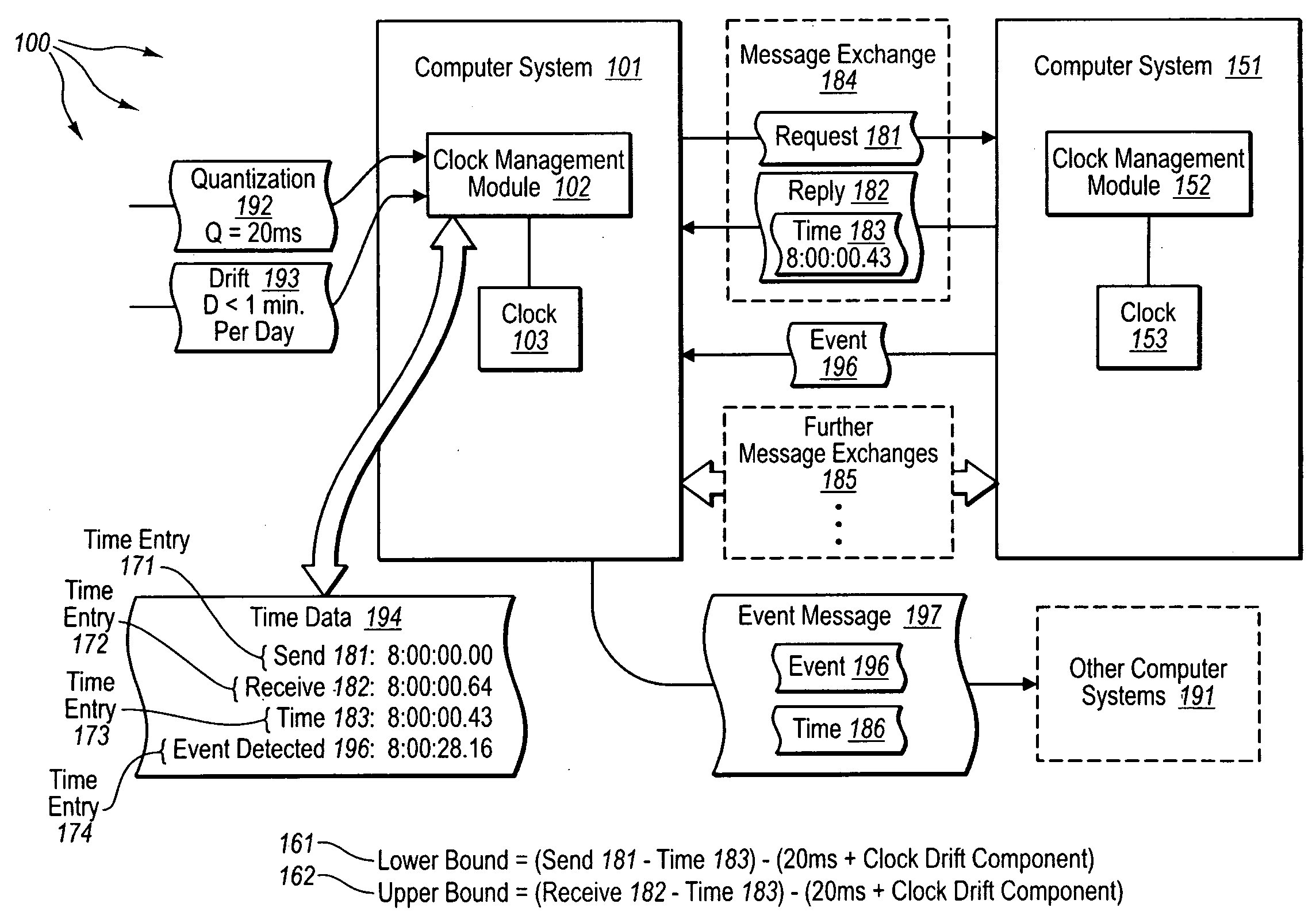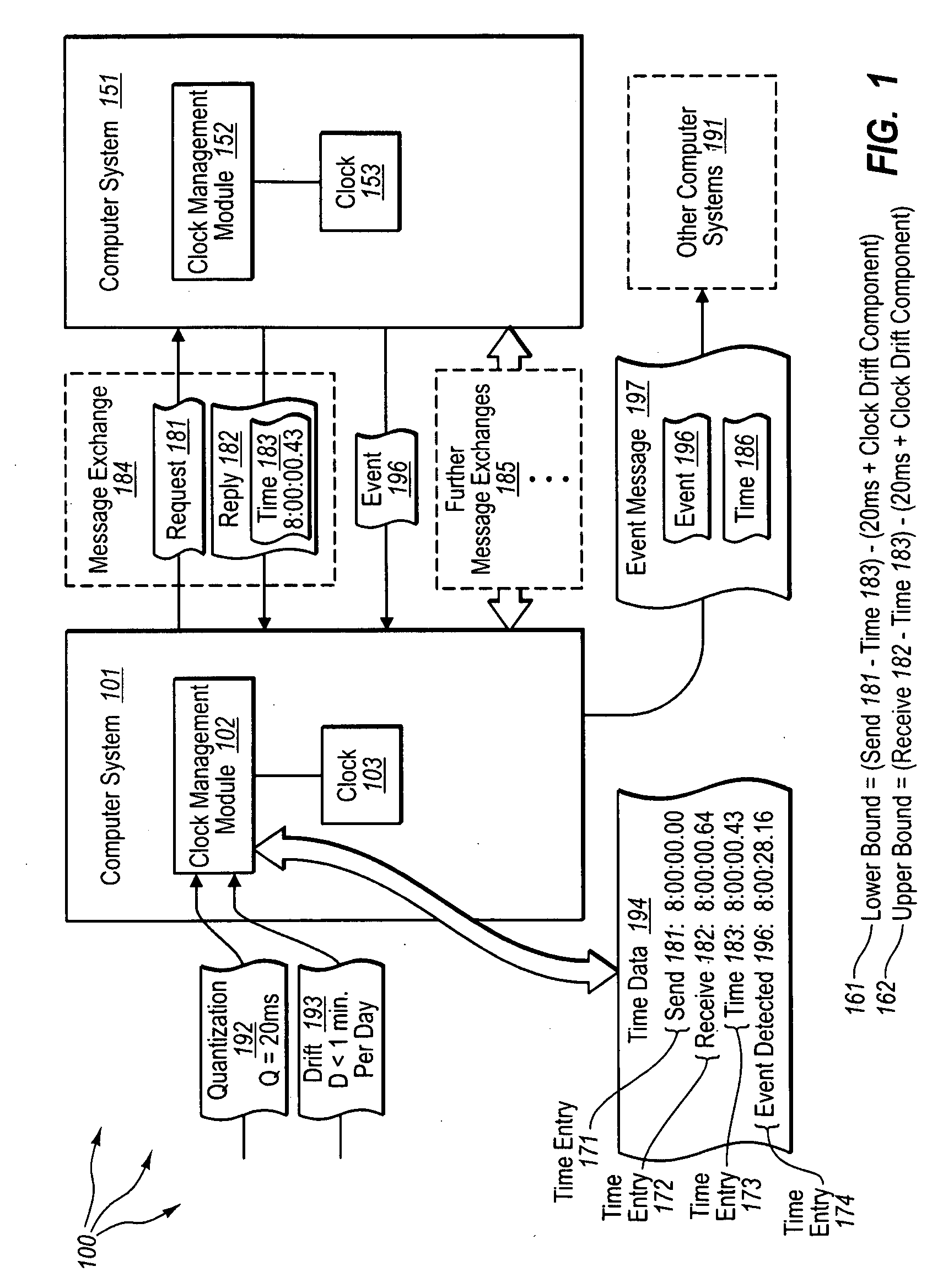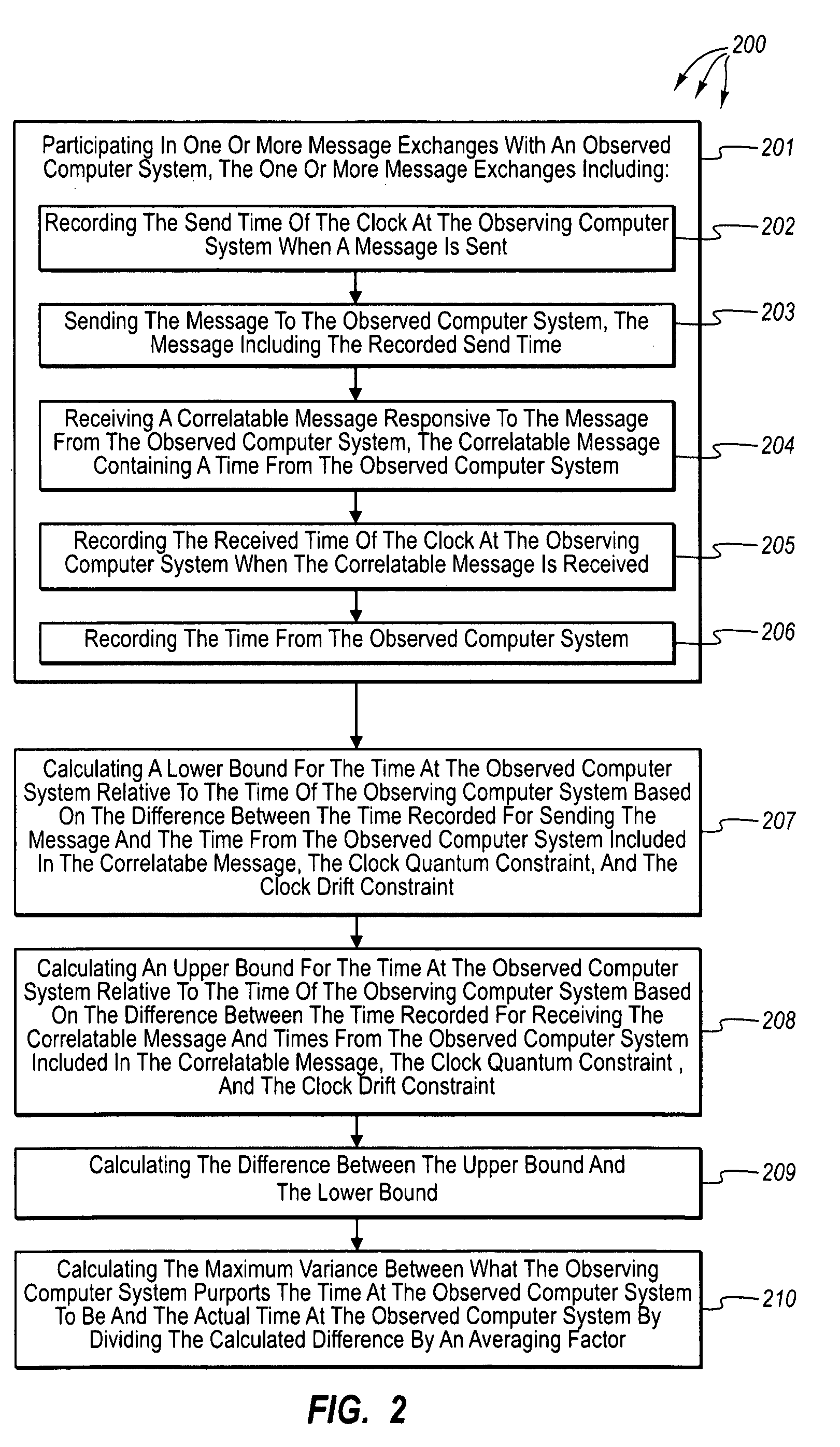Synchronizing clocks in an asynchronous distributed system
a technology of asynchronous distributed systems and clocks, applied in multiplex communication, generating/distributing signals, instruments, etc., can solve problems such as potential choke points and central points of failure, and virtually impossible high connectivity
- Summary
- Abstract
- Description
- Claims
- Application Information
AI Technical Summary
Benefits of technology
Problems solved by technology
Method used
Image
Examples
Embodiment Construction
[0021]The present invention extends to methods, systems, and computer program products for synchronizing clocks in an asynchronous distributed system In some embodiments, the variance between what an observing computer system purports the time at a different observed computer system to be and the actual (local) time at the observed computer system is determined. The observing computer system participates in at one or more message exchanges with the observed computer system.
[0022]A message exchange includes the observing computer system recording the send time of the clock at the observing computer system when a message is sent. A message exchange includes the observing computer system sending one or more messages to the observed computer system. A message exchange includes the observing computer system subsequently receiving correlatable messages responsive to the message from the observed computer system. The correlatable message contains a time from the observed computer system—it...
PUM
 Login to View More
Login to View More Abstract
Description
Claims
Application Information
 Login to View More
Login to View More - R&D
- Intellectual Property
- Life Sciences
- Materials
- Tech Scout
- Unparalleled Data Quality
- Higher Quality Content
- 60% Fewer Hallucinations
Browse by: Latest US Patents, China's latest patents, Technical Efficacy Thesaurus, Application Domain, Technology Topic, Popular Technical Reports.
© 2025 PatSnap. All rights reserved.Legal|Privacy policy|Modern Slavery Act Transparency Statement|Sitemap|About US| Contact US: help@patsnap.com



